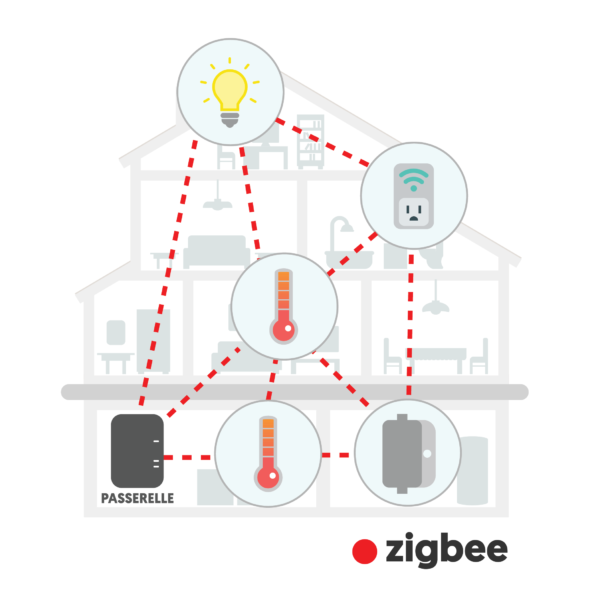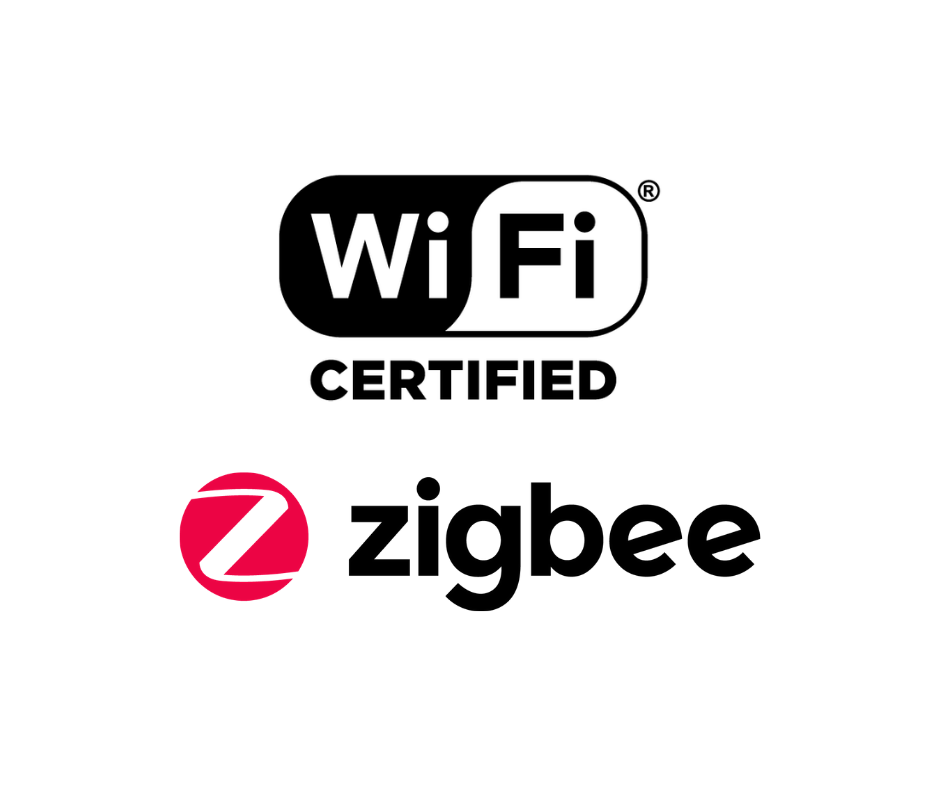The field of connected objects and home automation can seem very complicated for some people, hence the importance of doing research and being informed before making such a purchase. Among the questions that consumers ask themselves, one of them comes up frequently: What is the difference between Zigbee and Wi-Fi communication protocols? Let's take a closer look at the characteristics of each protocol.
Zigbee Communication Protocol
Smart devices, like thermostats, switches, and smart plugs, communicate with other objects using a communication protocol. Zigbee is one of the most popular. It is a wireless protocol that uses a secure, low-power mesh network architecture. This is an essential detail for optimizing devices’ energy consumption.
Products using the Zigbee communication protocol require a gateway to receive commands from mobile devices and user interfaces. This gateway saves all your connected objects’ setpoints and programmings so that your home remains smart and functional, even during an Internet outage. The Zigbee communication protocol offers unparalleled stability, which allows the creation of a large park of connected devices. It can be made up of different types of smart products such as those offered by Sinopé Technologies: gateway, thermostats, switches, dimmers, electrical outlets, load controller, and more.
The Zigbee communication protocol has several advantages, hence its growing popularity. These benefits include the local programming of devices, the ability to have a vast network, low energy consumption, compatibility and interoperability between different products, and dynamic communication between devices.

Wi-Fi Communication Protocol

For its part, the Wi-Fi communication protocol is by far the most widely used across the world. Already well established in our homes, Wi-Fi connected devices can be easily controlled with your mobile phone or tablet. Not requiring the additional use of a gateway, it is a good option for home automation newbies or for consumers who are not looking to build an advanced ecosystem with extensive functionality.
Mainly focused on developing Zigbee and previously Mi-Wi devices, Sinopé Technologies launched in September 2020 its smart Wi-Fi thermostat for electric heating. The company’s range of Wi-Fi products now includes a smart self-closing water valve, a Calypso water heater controller and several types of thermostats: electric heating thermostat, floor heating thermostat, and low-voltage thermostat. Unlike their Zigbee versions, the Wi-Fi thermostats are compatible with Apple HomeKit, a major asset for Apple fans.
Note that it is possible to equip your smart home with multiple types of Wi-Fi devices. However, to ensure network stability, it may be necessary to use a more powerful router or even a signal repeater.
Do you own Mi-Wi devices and want to add other Sinopé products to your ecosystem? It is now possible since your Mi-Wi devices can coexist in the same location as Wi-Fi and Zigbee devices in the Neviweb app.
Differences between Sinopé Wi-Fi and Zigbee thermostats
It may be relevant to know that Zigbee and Wi-Fi thermostats have pretty much the same settings but do not have exactly the same features.
| Differences between Sinopé Wi-Fi and Zigbee thermostats | ||
|
Wi-Fi |
Zigbee |
|
|
Connectivity requirements |
Wi-Fi devices require a permanent Internet connection as well as a Wi-Fi router to be controlled remotely through your mobile devices. |
Zigbee devices require the use of a gateway (GT130 or Zigbee compatible) and a permanent Internet connection to be controlled remotely through your mobile devices. |
|
Programmings |
Schedules: Set a different schedule for each day of the week, between 8 to 12 periods per day depending on the device. |
Automations: Create automations that run based on time, sunrise/sunset, device action, or your presence. |
|
Network stability |
The more connected devices the network has, the more interference there will be, which will affect its stability. * Tips to improve the stability of your network:
|
A Zigbee network can include many connected devices without affecting its stability. The network’s stability would even be enhanced since the devices relay information over a shorter distance. |
|
Compatibility |
|
|
Wi-Fi vs. Zigbee: which one should I choose?
Overall, Wi-Fi and Zigbee are two great communication protocols to get full control of your smart home. Your smart devices should be chosen according to your needs. For example, if you want to control a few rooms’ temperature remotely or if you already use the Apple HomeKit app at home, we suggest you opt for Wi-Fi products. On the other hand, if you want to eventually purchase a complete ecosystem of Sinopé smart devices, including heating, lighting, and specialized controls, we recommend that you choose Zigbee products. So, which one best suits your lifestyle?



Partager:
Energy savings in times of pandemic: is it possible?
Interview with Mr. Francis Nadeau, co-owner of Jardins Duplessis Phase III